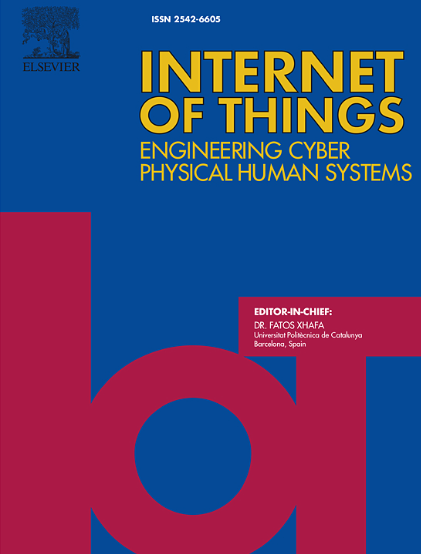Combinative model compression approach for enhancing 1D CNN efficiency for EIT-based Hand Gesture Recognition on IoT edge devices
IF 6
3区 计算机科学
Q1 COMPUTER SCIENCE, INFORMATION SYSTEMS
引用次数: 0
Abstract
Tiny Machine Learning is rapidly evolving in edge computing and intelligent Internet of Things (IoT) devices. This paper investigates model compression techniques with the aim of determining their compatibility when combined, and identifying an effective approach to improve inference speed and energy efficiency within IoT edge devices. The study is carried out on the application scenario of Hand Gesture Recognition (HGR) based on Electrical Impedance Tomography (EIT), which involves complex signal processing and needs real-time processing and energy efficiency. Therefore, a customized 1-Dimensional Convolutional Neural Network (1D CNN) HGR classification model has been designed. An approach based on strategically combining model compression techniques was then implemented resulting in a model customized for faster inference and improved energy efficiency for IoT embedded devices. The model size became compact at 10.42 kB, resulting in a substantial size reduction of 98.8%, and an inference gain of 94.73% on a personal computer with approximately 8.56% decrease in accuracy. The approach of combinative model compression techniques was applied to a wide range of edge-computing IoT devices with limited processing power, resulting in a significant improvement in model execution speed and energy efficiency for these devices. Specifically, there was an average power consumption gain of 52% for Arduino Nano BLE and 34.05% for Raspberry Pi 4. Inference time was halved for Arduino Nano BLE Sense, Nicla Sense, and Raspberry Pi 4, with a remarkable gain of 94% for ESP32.
采用组合模型压缩方法提高基于 EIT 的物联网边缘设备手势识别的一维 CNN 效率
微型机器学习在边缘计算和智能物联网(IoT)设备中发展迅速。本文对模型压缩技术进行了研究,旨在确定这些技术结合使用时的兼容性,并找出一种有效的方法来提高物联网边缘设备的推理速度和能效。研究针对基于电阻抗断层扫描(EIT)的手势识别(HGR)应用场景展开,该应用场景涉及复杂的信号处理,需要实时处理并提高能效。因此,设计了一个定制的一维卷积神经网络(1D CNN)HGR 分类模型。然后,实施了一种基于模型压缩技术战略组合的方法,从而为物联网嵌入式设备定制了一个推理速度更快、能效更高的模型。模型大小压缩为 10.42 kB,大幅缩小了 98.8%,在个人电脑上的推理增益为 94.73%,准确率降低了约 8.56%。组合模型压缩技术方法被广泛应用于处理能力有限的边缘计算物联网设备,从而显著提高了这些设备的模型执行速度和能效。具体来说,Arduino Nano BLE 和 Raspberry Pi 4 的平均功耗分别增加了 52% 和 34.05%。Arduino Nano BLE Sense、Nicla Sense 和 Raspberry Pi 4 的推理时间缩短了一半,ESP32 的推理时间显著增加了 94%。
本文章由计算机程序翻译,如有差异,请以英文原文为准。
求助全文
约1分钟内获得全文
求助全文
来源期刊

Internet of Things
Multiple-
CiteScore
3.60
自引率
5.10%
发文量
115
审稿时长
37 days
期刊介绍:
Internet of Things; Engineering Cyber Physical Human Systems is a comprehensive journal encouraging cross collaboration between researchers, engineers and practitioners in the field of IoT & Cyber Physical Human Systems. The journal offers a unique platform to exchange scientific information on the entire breadth of technology, science, and societal applications of the IoT.
The journal will place a high priority on timely publication, and provide a home for high quality.
Furthermore, IOT is interested in publishing topical Special Issues on any aspect of IOT.
 求助内容:
求助内容: 应助结果提醒方式:
应助结果提醒方式:


